Previous - German coins before euro
German euro coins - catalog with values
Federal Republic of Germany
Reform 2002
Euro=100 euro cents
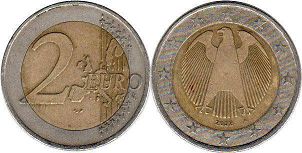
2 euro 2002 (2002-2006)
bi-metallic - nickel-brass/copper-nickel
2 EURO
2002
Coin value ~ 3-4 USD
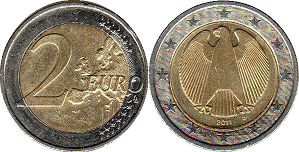
2 euro 2011 (2007- )
bi-metallic - nickel-brass/copper-nickel
2 EURO
2011
Coin value ~ 3-4 USD
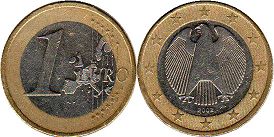
1 euro 2002 (2002-2006)
bi-metallic - copper-nickel/nickel-brass
1 EURO
2002
Coin value ~ 2-3 USD
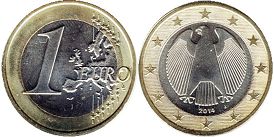
1 euro 2014 (2007- )
bi-metallic - copper-nickel/nickel-brass
1 EURO
2014
Coin value ~ 8-12 USD
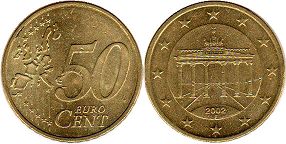
50 euro cent 2002 (2002-2006)
brass
50 EURO CENT
2002
Coin value ~ US$1
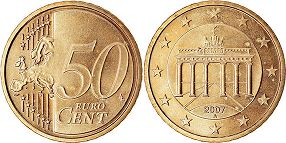
50 euro cent 2007 (2007- )
brass
50 EURO CENT
2007
Coin value ~ 3-6 USD
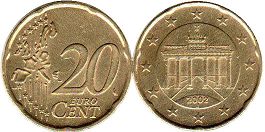
20 euro cent 2002 (2002-2006)
brass
20 EURO CENT
2002
Coin value < US$1
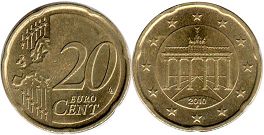
20 euro cent 2010 (2007- )
brass
20 EURO CENT
2010
Coin value < US$1
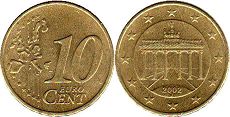
10 euro cent 2002 (2002-2006)
brass
10 EURO CENT
2002
Coin value < US$1
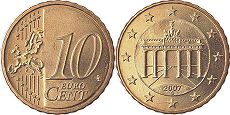
10 euro cent 2007 (2007- )
brass
10 EURO CENT
2007
Coin value ~ 3-6 USD
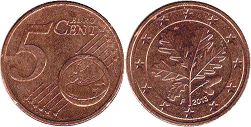
5 euro cent 2013 (2002- )
copper plated steel
5 EURO CENT
2013
Coin value < US$1
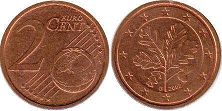
2 euro cent 2002 (2002- )
copper plated steel
2 EURO CENT
2002 / Oak leaves
Coin value < US$1

1 euro cent 2016 (2002- )
copper plated steel
1 EURO CENT
2016 / Oak leaves
Coin value < US$1
Euro coins of other countries
AndorraAustria
Belgium
Croatia
Cyprus
Estonia
Finland
France
Greece
Italy
Ireland
Latvia
Lithuania
Luxembourg
Malta
Monaco
Netherlands
Portugal
San Marino
Slovakia
Slovenia
Spain
Vatican
Costs of German euro coins in this catalog approximate and indicated specifically for the coin shown in the picture.
I do not buy or sell coins - this is just a catalog.

